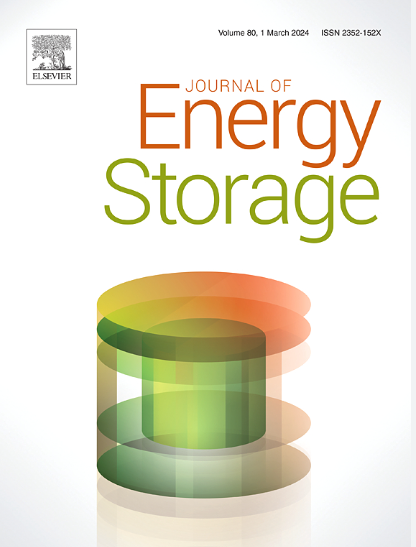The application of pulse response analysis method in lithium-ion battery modeling and state estimation
IF 8.9
2区 工程技术
Q1 ENERGY & FUELS
引用次数: 0
Abstract
Battery management depends on accurate battery models. However, comprehensive battery models are often complicated and computationally demanding, limiting their practical usage, Researchers aim to simplify and improve models for better system efficiency. This paper introduces a pulse response (PR) analysis method to describe battery polarization characteristics. By combining PR analysis, convolution theory, Kalman algorithm, and regression algorithm, we propose a precise calculation method for the battery's pulse response function and establish a simplified battery model structure. Under dynamic conditions, the simulated terminal voltage error using the pulse response model is <0.4 %, showcasing its accuracy. Additionally, the State of Charge (SOC) estimation error remains below 0.5 %, further highlighting the model's reliability. Furthermore, the paper introduces a rapid State of Health (SOH) estimation approach using pulse response functions and time coefficient (TC) methodology. This method achieves precise SOH estimation with an error of <0.2 % through linear regression based on a 1 s pulse and 5 s relaxation. Our method effectively avoids the subjective biases that conventional methods may encounter in parameter identification and feature extraction, providing a more objective basis for battery simulation and management. This makes our method highly suitable for engineering applications and contributes to enhancing battery management performance.
脉冲响应分析方法在锂离子电池建模和状态估计中的应用
电池管理依赖于精确的电池模型。然而,全面的电池模型通常比较复杂,计算要求高,限制了其实际应用。研究人员旨在简化和改进模型,以提高系统效率。本文介绍了一种描述电池极化特性的脉冲响应(PR)分析方法。通过结合脉冲响应分析、卷积理论、卡尔曼算法和回归算法,我们提出了电池脉冲响应函数的精确计算方法,并建立了简化的电池模型结构。在动态条件下,使用脉冲响应模型模拟的端电压误差为 0.4%,显示了其精确性。此外,充电状态(SOC)估计误差保持在 0.5 % 以下,进一步突出了模型的可靠性。此外,论文还介绍了一种使用脉冲响应函数和时间系数 (TC) 方法的快速健康状态 (SOH) 估算方法。该方法通过基于 1 秒脉冲和 5 秒放松的线性回归,实现了精确的 SOH 估计,误差为 0.2%。我们的方法有效避免了传统方法在参数识别和特征提取方面可能遇到的主观偏差,为电池模拟和管理提供了更客观的依据。这使得我们的方法非常适合工程应用,并有助于提高电池管理性能。
本文章由计算机程序翻译,如有差异,请以英文原文为准。
求助全文
约1分钟内获得全文
求助全文
来源期刊

Journal of energy storage
Energy-Renewable Energy, Sustainability and the Environment
CiteScore
11.80
自引率
24.50%
发文量
2262
审稿时长
69 days
期刊介绍:
Journal of energy storage focusses on all aspects of energy storage, in particular systems integration, electric grid integration, modelling and analysis, novel energy storage technologies, sizing and management strategies, business models for operation of storage systems and energy storage developments worldwide.
 求助内容:
求助内容: 应助结果提醒方式:
应助结果提醒方式:


